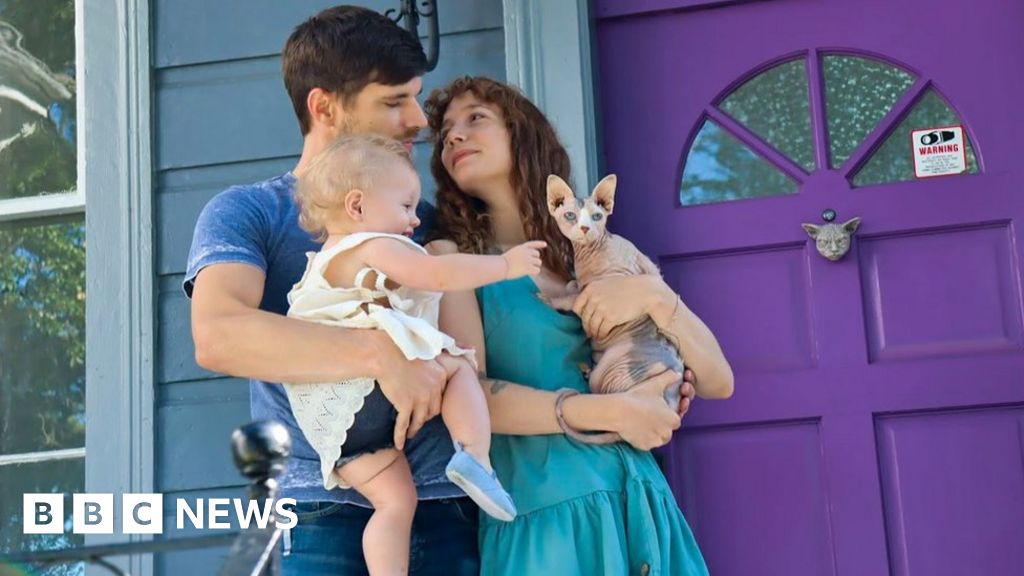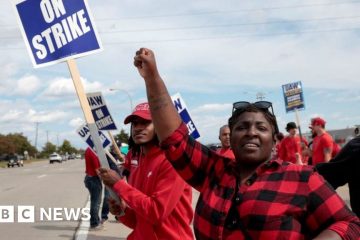As extreme weather events multiply, home insurance providers in the US are rapidly raising rates – or quitting the business altogether – forcing many into severe financial distress.
Gretchen Bradford decided this year not to pay for home insurance.
The 59-year-old has lived her whole life in New Orleans, which sits on Louisiana’s Gulf Coast in a zone climate experts call Hurricane Alley for the devastating storms – including Hurricane Katrina in 2005 – that routinely crash against its shores.
The 59-year-old has lived her whole life in New Orleans, which sits on Louisiana’s Gulf Coast in a zone climate experts call Hurricane Alley for the devastating storms – including Hurricane Katrina in 2005 – that routinely crash against its shores.
In 2021, she was paying $3,035 (£2,386) annually. After her insurer stopped writing new policies in her neighbourhood, in 2022, the quote she received from the state-backed plan was more than triple that amount – $9,876 – a sum she could not afford.
“To pay insurance would be taking away from food on my table, right now,” says Ms Bradford, who relies on disability insurance for her income.
“I can’t grow money out of trees. I don’t have it. So, I don’t know what else to do.”
Ms Bradford is not alone in her plight.
As extreme weather events multiply, home insurance providers in the US are rapidly raising rates – or quitting the business altogether – forcing many into severe financial distress.
The 59-year-old has lived her whole life in New Orleans, which sits on Louisiana’s Gulf Coast in a zone climate experts call Hurricane Alley for the devastating storms – including Hurricane Katrina in 2005 – that routinely crash against its shores.
Gretchen Bradford decided this year not to pay for home insurance.
In 2021, she was paying $3,035 (£2,386) annually. After her insurer stopped writing new policies in her neighbourhood, in 2022, the quote she received from the state-backed plan was more than triple that amount – $9,876 – a sum she could not afford.
The 59-year-old has lived her whole life in New Orleans, which sits on Louisiana’s Gulf Coast in a zone climate experts call Hurricane Alley for the devastating storms – including Hurricane Katrina in 2005 – that routinely crash against its shores.
The 59-year-old has lived her whole life in New Orleans, which sits on Louisiana’s Gulf Coast in a zone climate experts call Hurricane Alley for the devastating storms – including Hurricane Katrina in 2005 – that routinely crash against its shores.
In 2021, she was paying $3,035 (£2,386) annually. After her insurer stopped writing new policies in her neighbourhood, in 2022, the quote she received from the state-backed plan was more than triple that amount – $9,876 – a sum she could not afford.
“To pay insurance would be taking away from food on my table, right now,” says Ms Bradford, who relies on disability insurance for her income.
“I can’t grow money out of trees. I don’t have it. So, I don’t know what else to do.”
Ms Bradford is not alone in her plight.
#people #choose #food #home #insurance
Note:- (Not all news on the site expresses the point of view of the site, but we transmit this news automatically and translate it through programmatic technology on the site and not from a human editor. The content is auto-generated from a syndicated feed.))



